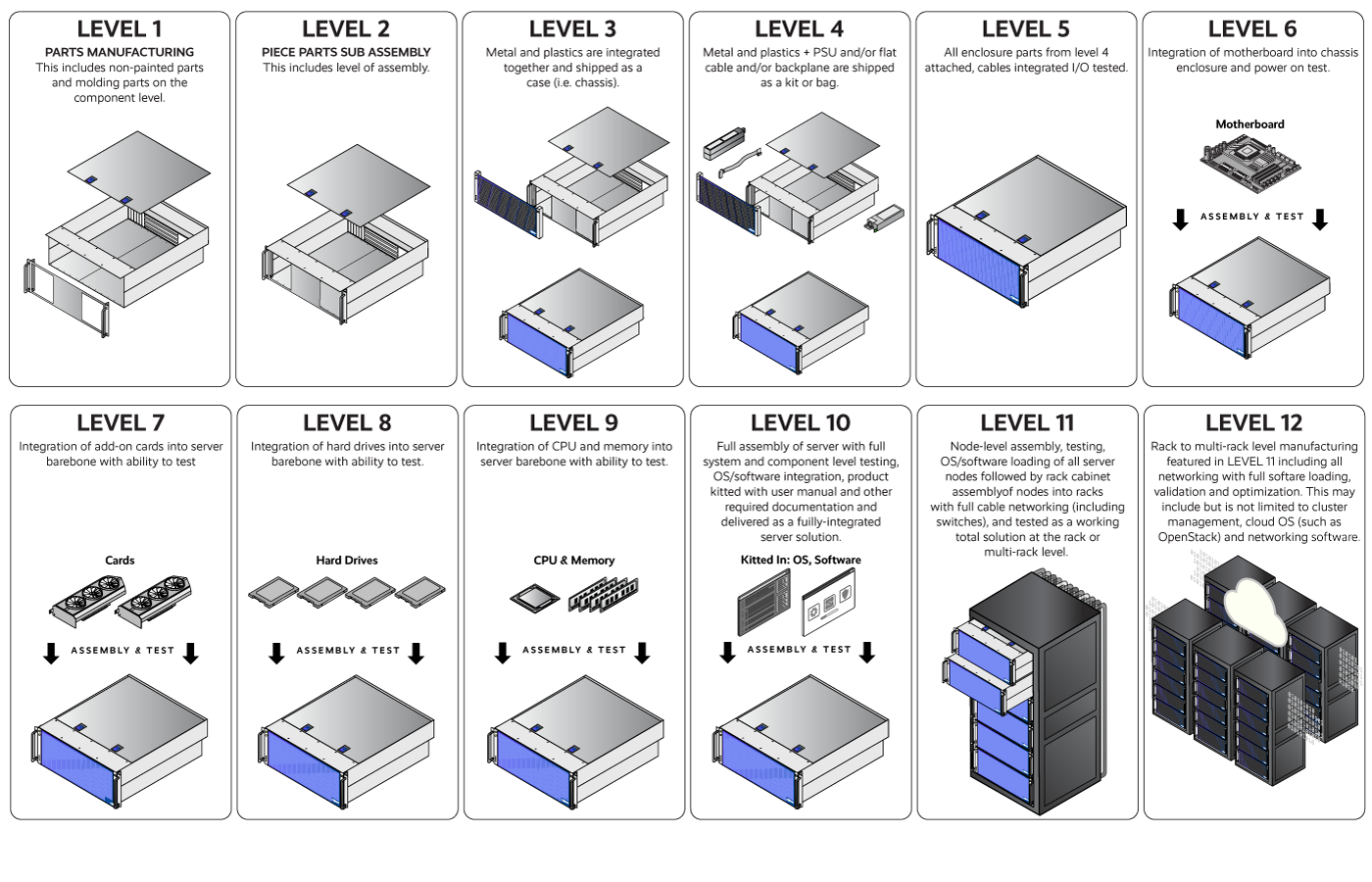In the context of hardware testing, integration, and buildout, L10, L11, and L12 refer to different levels of manufacturing and assembly processes:
- L10: This level involves the server-level assembly. The result of L10 is a fully working server that can fully boot into an OS.
- L11: This level involves rack-level assembly. The result of L11 is a full rack with all of the intra-rack components cabled up. This might include top-of-rack switches, cabling, and PDUs.
- L12: This level involves cluster-level assembly. The result of L12 is a full cluster, complete with cross-rack cabling.
These are becoming particularly important with rack-scale integration such as Cray EX and B200 with rack-level NVLink. When an individual server or blade fails, there are a certain set of L10 validations that can run because L10 covers the whole server. However, you may not be able to run L11 or L12 testing to verify all the functionality of the server, because L11 (NVLink switch-level) or L12 (InfiniBand fabric-level) tests may be disruptive to nodes in the system that did not fail.
Here are all the manufacturing levels:1

I think L9 and below are pretty early in the supply chain, so I’ve never heard anyone talk about them in an HPC context.